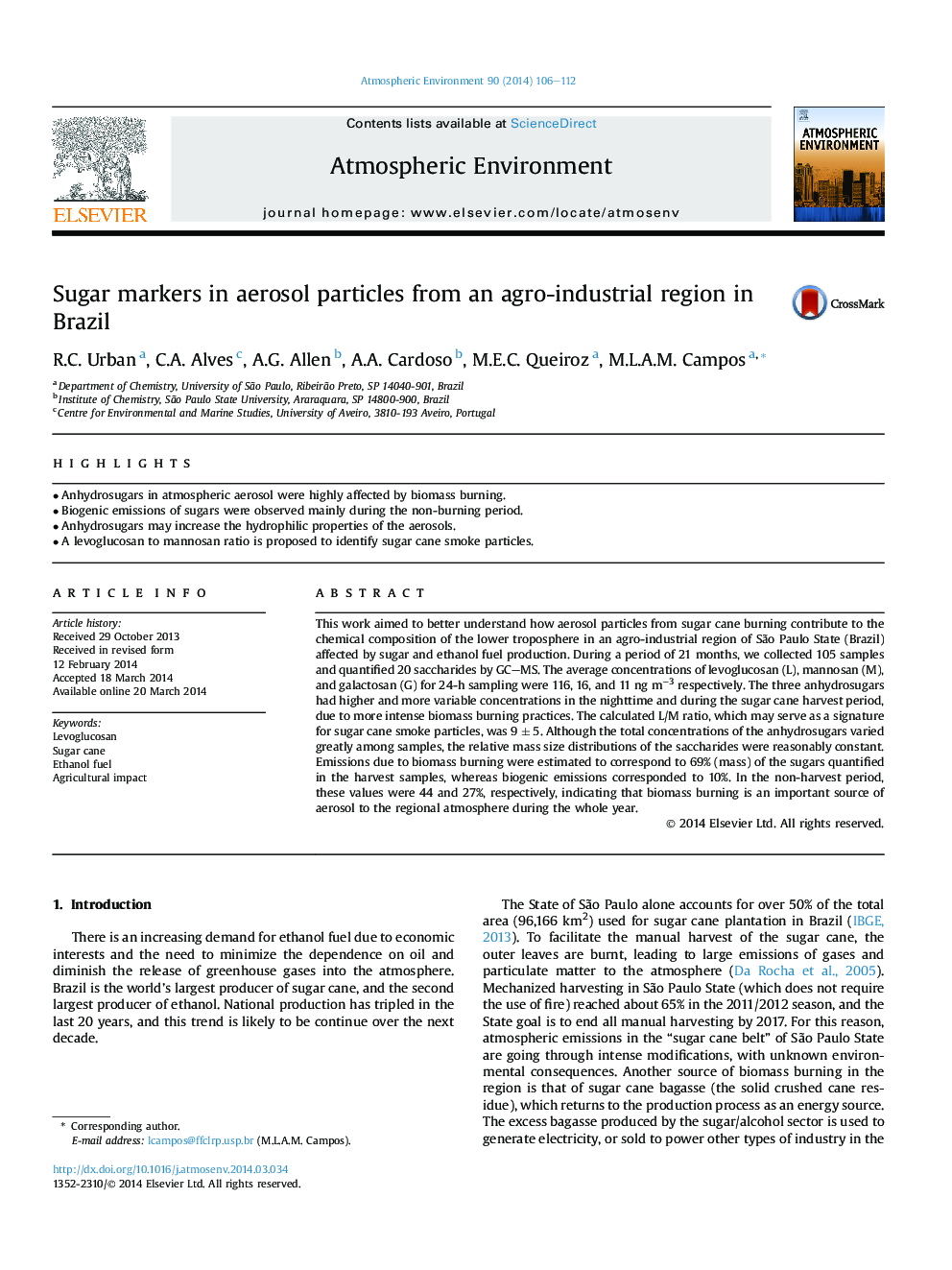| Article ID | Journal | Published Year | Pages | File Type |
|---|---|---|---|---|
| 6340010 | Atmospheric Environment | 2014 | 7 Pages |
Abstract
This work aimed to better understand how aerosol particles from sugar cane burning contribute to the chemical composition of the lower troposphere in an agro-industrial region of São Paulo State (Brazil) affected by sugar and ethanol fuel production. During a period of 21 months, we collected 105 samples and quantified 20 saccharides by GC-MS. The average concentrations of levoglucosan (L), mannosan (M), and galactosan (G) for 24-h sampling were 116, 16, and 11 ng mâ3 respectively. The three anhydrosugars had higher and more variable concentrations in the nighttime and during the sugar cane harvest period, due to more intense biomass burning practices. The calculated L/M ratio, which may serve as a signature for sugar cane smoke particles, was 9 ± 5. Although the total concentrations of the anhydrosugars varied greatly among samples, the relative mass size distributions of the saccharides were reasonably constant. Emissions due to biomass burning were estimated to correspond to 69% (mass) of the sugars quantified in the harvest samples, whereas biogenic emissions corresponded to 10%. In the non-harvest period, these values were 44 and 27%, respectively, indicating that biomass burning is an important source of aerosol to the regional atmosphere during the whole year.
Keywords
Related Topics
Physical Sciences and Engineering
Earth and Planetary Sciences
Atmospheric Science
Authors
R.C. Urban, C.A. Alves, A.G. Allen, A.A. Cardoso, M.E.C. Queiroz, M.L.A.M. Campos,
